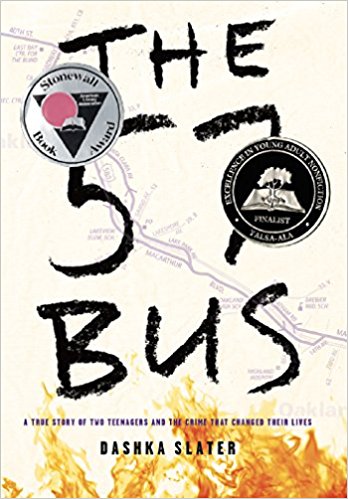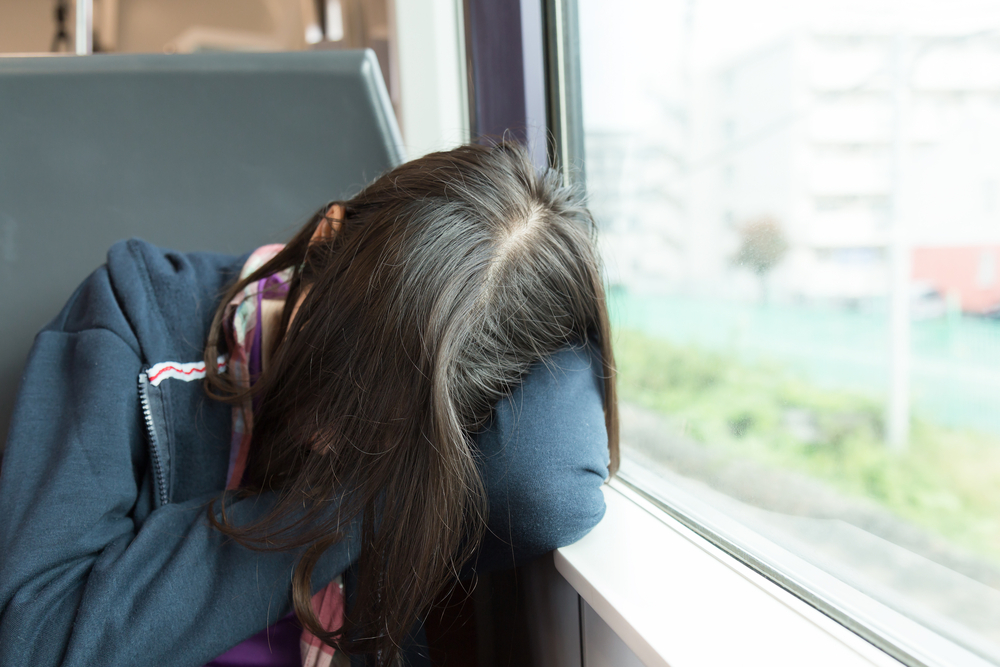What should be the cost of a terrible mistake? On Nov. 4, 2013, two young people’s lives tragically intersected on a bus in Oakland, Calif. That afternoon, Oakland’s 57 bus carried Richard and Sasha home after school.

The 57 Bus: A True Story of Two Teenagers and the Crime That Changed Their Lives | Dashka Slater | Farrar, Straus and Giroux | October 2017 | 320 pages
Each had had very different life experiences that led them to this moment, including their race, class, education, upbringing and gender identities. Dashka Slater’s “The 57 Bus: A True Story of Two Teenagers and the Crime That Changed Their Lives” tells the stories of Richard and Sasha, which neither began nor ended when Sasha’s skirt is lit on fire, resulting in serious burns. Instead, the book carefully highlights the complexity and intersectionality of their lives and our juvenile justice system.
Before the fire, Richard and Sasha were just two high school students living in Oakland. Richard was coming home from public Oakland High School and Sasha from a private high school in Berkeley. Richard had returned recently from a group home and struggled with trauma and community violence, but was dedicated to improving his education. Sasha was a highly accomplished young person with an excellent academic record who fearlessly challenged conventional gender norms, behavior that was nurtured at home and in school.
Slater’s powerful book honors the humanity of both young people, but central to the story is one act. That November afternoon, Sasha was asleep on the bus, while Richard nearby joked with two friends. As the bus moved, Richard and his friends began teasing Sasha, who was still asleep. Soon, one of Richard’s friends gave him a lighter and encouraged him to set Sasha’s skirt on fire.

Dashka Slater
Richard would later claim this was only meant as a spur of the moment prank, but the fire left Sasha with serious burns requiring multiple surgeries. The fire on the 57 bus quickly drew widespread attention well beyond the Bay Area. It was dramatic and tapped into many people’s fears of hate crimes, homophobia and the perceived coarsening of today’s youth, among many other areas.
Slater details the consequences that Richard faced, which helps guide the general reader through major issues in our juvenile justice system. Richard was soon arrested and interrogated by the police without fully understanding his rights. The Alameda County District Attorney subsequently transferred Richard to the adult criminal justice system through California’s troubling direct file process. Up until 2016, California prosecutors had the discretion to transfer youth into the adult system for specified offenses, which resulted in racial and ethnic disparities and wide variation across the state’s 58 counties. Eventually, Richard was found guilty and committed to California’s state youth correctional system, the Division of Juvenile Justice (DJJ).
Complexity of case underlines reforms
However, the book is much more than a relatively simple retelling of a crime and punishment. Slater challenges conventional binary good versus bad value assumptions that were made against Richard, particularly in the immediate aftermath of the fire. Sasha’s parents struggle with the district attorney’s decision to charge Richard as an adult and his eventual commitment to DJJ.
Sasha, his parents and the reader see Richard’s life beyond that brief moment on the 57 bus. That life includes the trials of a sensitive and deeply remorseful young person, who, despite having a loving mother and teacher, has rarely had the opportunity to heal from violence and trauma, let alone develop his education and social well-being. These challenges are shown in sharp relief with the nurturing support that Sasha receives, both before and after the fire.
The complexity of the case also becomes clear as Slater discusses the responses of many community and activist groups concerned by youth incarceration. Notably, the National Center for Lesbian Rights and Transgender Law Center both decried the crime and publicly asked the district attorney to keep Richard out of the adult justice system. Slater also causes the reader to question punitive and confinement-based responses to serious crimes, while highlighting the power of restorative justice models. If California and the country are to ever achieve comprehensive justice reform, it requires re-examination of these practices.
Since the fire on the 57 bus, California has adopted a wide range of justice reforms, some of which might have mitigated Richard’s problematic experiences. Proposition 57, passed in 2016, better protects young people from transfer into the criminal justice system. 2017 legislation requires youth 15 or younger to consult with an attorney before custodial interrogation; Richard would have been too old to benefit from this protection.
However, these important reforms could be susceptible to a public backlash amid a high-profile controversial case or increasing youth crime. The recent recall of California Judge Aaron Persky should serve as note of caution for those optimistic about the prospect of unfettered justice reform. The power of “The 57 Bus” is that it shows how storytelling can foster empathy. This helps the general public understand the complexity of our juvenile justice system and those youth who are impacted. Transformative and sustainable policymaking requires the public to transcend the simple binary narrative of Sasha versus Richard and instead adopt a healing-centered vision that is inclusive of both Sasha and Richard.
One hopes that Richard and Sasha will not be defined solely by their experience on the 57 bus. While the event ties them and their families together, the book notes that each has moved on from the fateful experience. Sasha is finishing school at MIT and Richard is poised to enter the next phase of his life. The book’s primary audience is young adults, but is recommended for anyone interested in the complexities of our justice system. While unfortunately the story of youth trauma and violence might be universal, hopefully, the same can be said of Richard and Sasha’s potential for healing and wellness.
Brian Goldstein is the Center on Juvenile and Criminal Justice's director of policy and development.
